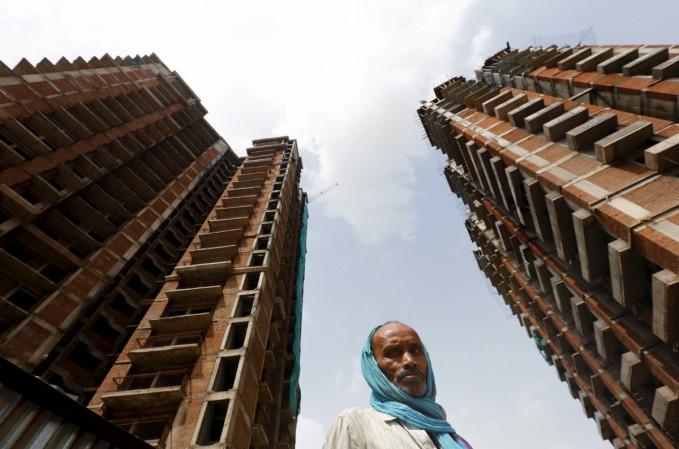
The Indian real estate sector has evolved exponentially over the past two decades. The residential segment had cornered a large portion of the initial investment fund flow given its self-liquidating nature and the large demand-supply gap, especially across semi-urban and urban areas. The segment was witness to the entry of a large number of developers and institutional players between 2009 and 2013 on the back of strong recovery post the global financial crisis.
The market has, however, been witnessing a slowdown over the past 2-3 years with prime residential hotspots such as Delhi-NCR and Mumbai, among others, experiencing a substantial year-on- year decline in housing sales. This has largely been led by increased preference among home buyers for completed and near completion projects with demand undergoing a paradigm shift from being more investor-led to turning end user driven.
Fiscal 2017 has emerged as a historic year for Indian real estate with a number of landmark legislations such as RERA and GST. Affordable housing has gone on to become a massive watchword given the focus that the government appears to be applying on it through promoting policies and action to ensure the success of its mission of 'Housing for All' by 2022.
Raising the attraction quotient
The positive sentiment has largely been driven by a host of incentives offered by the government to make the segment more economically viable for both developers and institutional investors. The long-awaited infrastructure status has been accorded to the segment under the Finance Bill 2018. This is expected to go a long way in enhancing the growth of this asset class, thereby allowing easy access to capital at cheaper rates for priority sector lending, clearer investment guidelines and greater transparency.
Further, the government has tweaked the definition of affordable housing projects to pave the way for 100 percent tax subsidy on profits of any affordable housing undertaking. The time period for completion of projects has been increased from 3 years to 5 years.
Most institutional players are looking at affordable housing as a 'mid-margin and quick turnaround' product to ensure reasonable returns. This has been made possible with speedy government approvals and incentives to end users, especially first-time home buyers living in rented accommodations who want to own their dream home. The government has been very proactive on this front as well by introducing a slew of benefits for homebuyers such as allowing interest subsidy of 3 percent and 4 percent for first-time home buyers availing of loans up to Rs 12 lakh and Rs 9 lakh respectively under the Pradhan Mantri Awas Yojana (PMAY).
Moreover, it is proposed to bring the middle class under the scheme's ambit to significantly bolster demand in the segment. Additionally, area norms for affordable housing units have been amended from being calculated basis 'built-up area' to 'carpet area' with the 30 sq m limit now applicable only within municipal corporation-controlled areas of the four major metros. Furthermore, affordable housing policies across various states also offer a multitude of supplementary benefits for developers (additional FAR, zero license and approval fees, additional ground coverage) and buyers (zero maintenance fees for 5 years, keeping tabs on developers to ensure timely project completion, among others).
For investors who have struggled to cope with the slowdown in the residential segment over the last 2-3 years, the affordable segment is a beacon of light. The uncertainty of approvals taking too long, developers delaying projects and uncertain demand have given way to new opportunities in a segment where the above pitfalls are far fewer.
Enter, the dragons
Arms of established players like Shapoorji Pallonji Joyville and Tata Value Homes have rebranded themselves to cater to this exciting mass segment. Also in the fray are institutions and funds like HDFC Capital, IFC, Standard Chartered and Kotak Investment Advisors, looking at backing projects in the affordable segment. New entrants to the market like Tribeca Developers see strong opportunities in this segment. Sovereign funds like ADIA (Abu Dhabi Investment Authority), are also backing the affordable story by lining up substantial commitments to the segment.
All this has helped smaller developers, known to deliver projects on time and earn good customer mindshare, get a foot in the door. These developers are attracting the active interest of funds. There is no doubt that the future of the affordable segment looks bright for all players in this market. However, challenges exist to be overcome. First, the prompt availability of cheaper land -- unless the supply of more affordable housing land becomes available at reasonable prices, there cannot be real affordability. Secondly, the quality of infrastructure and last mile connectivity around some of these projects is extremely poor. Lastly, it should also cater to the aspirations of home buyers. The absence of amenities such as car parking, for instance, presumes that a buyer of such units does not own or aspire to own a car. These issues have to be addressed in the near term to make the affordable segment the success it deserves to be.
(The writer is National Director, Capital Markets and Investment Services, Colliers International India)

















